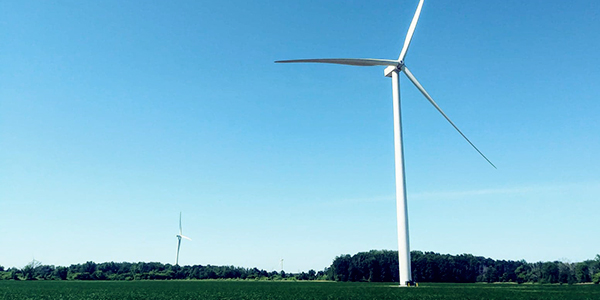MISO wrapped its yearslong Renewable Integration Impact Assessment (RIIA) last week, with staff pledging more targeted studies on the shift to a majority renewable resource mix.
During a special teleconference March 3 to recap study findings, staff said members’ actual renewable adoption has already outstripped expectations.
MISO Manager of Policy Studies Jordan Bakke said the pace of wind and solar integration has increased beyond the grid operator’s projections since it began the analysis in 2017. He said renewable forecasts morphed as adoption ticked up in the following years.
When staff began RIIAs in 2017, the ISO had an 8% system-wide renewable generation share. By the study’s end in late 2020, renewable generation had grown to 13%.
Bakke said MISO is “rapidly approaching 20%” just relying on members’ planned resource additions in the next few years. He said the 30% milestone has ISO planners concerned.
Staff said the study’s big takeaway is that system challenges and complexity increase sharply when renewables reach the 30% share of the resource mix. Bakke said the analysis focused on when MISO’s ability to serve load might be threatened in a majority renewable future.
In past RIIA presentations, staff has emphasized that its current transmission infrastructure is hampered in delivering all energy to load at 30% renewable penetration and beyond. However, they said with billions in transmission buildout, it could reliably operate a system containing a 50% renewable share. (See MISO Recaps 4 Years of Renewable Study.)
“Growing renewables are driving localized reliability risks now,” Bakke said. “RIIA finds these challenges will become footprint-wide beyond a 30% system-wide renewable penetration.”
James Okullo, a policy studies engineer with MISO, said RIIA’s findings are still relevant despite renewables’ acceleration. If anything, he said, the study emphasizes the need to act quickly and prepare the system.
Okullo said future renewable studies will contain more data on weather patterns necessary to produce more accurate conclusions on the relationship between renewables and less predictable resource adequacy.
MISO also said it will need “additional targeted research into multiple transmission technologies, operating tools and market tools to incentivize availability of grid services.” It said it could explore new grid technology pilots to address weak grid issues.
Bakke said going forward the grid operator requires generation flexibility to cover warm evenings and winter days. He said staff found that added wind generation tends to shift traditional summertime reliability risk to the winter, while solar additions nudge risk to evening hours.
“The risk of not having enough generation to meet demand shifts from the historic times of peak demand to hot summer evenings and cold winter mornings, when low availability of wind and solar resources is coincident with high power demand,” he said.
Bakke said expanding renewable generation means more hourly variability, which will require generation to be nimbler in terms of ramp capability and curtailments.
Staff concluded MISO will need extra-high-voltage transfer capabilities as renewable energy clusters place extra demand on transporting energy from region to region. They have also said energy storage only aids delivery to a certain degree and new transmission projects will be paramount in securing the RTO’s ability to deliver energy to load at all times of the year. But the grid operator has said it could do more research into how battery storage can help stabilize a system peppered with inverter-based generation.





